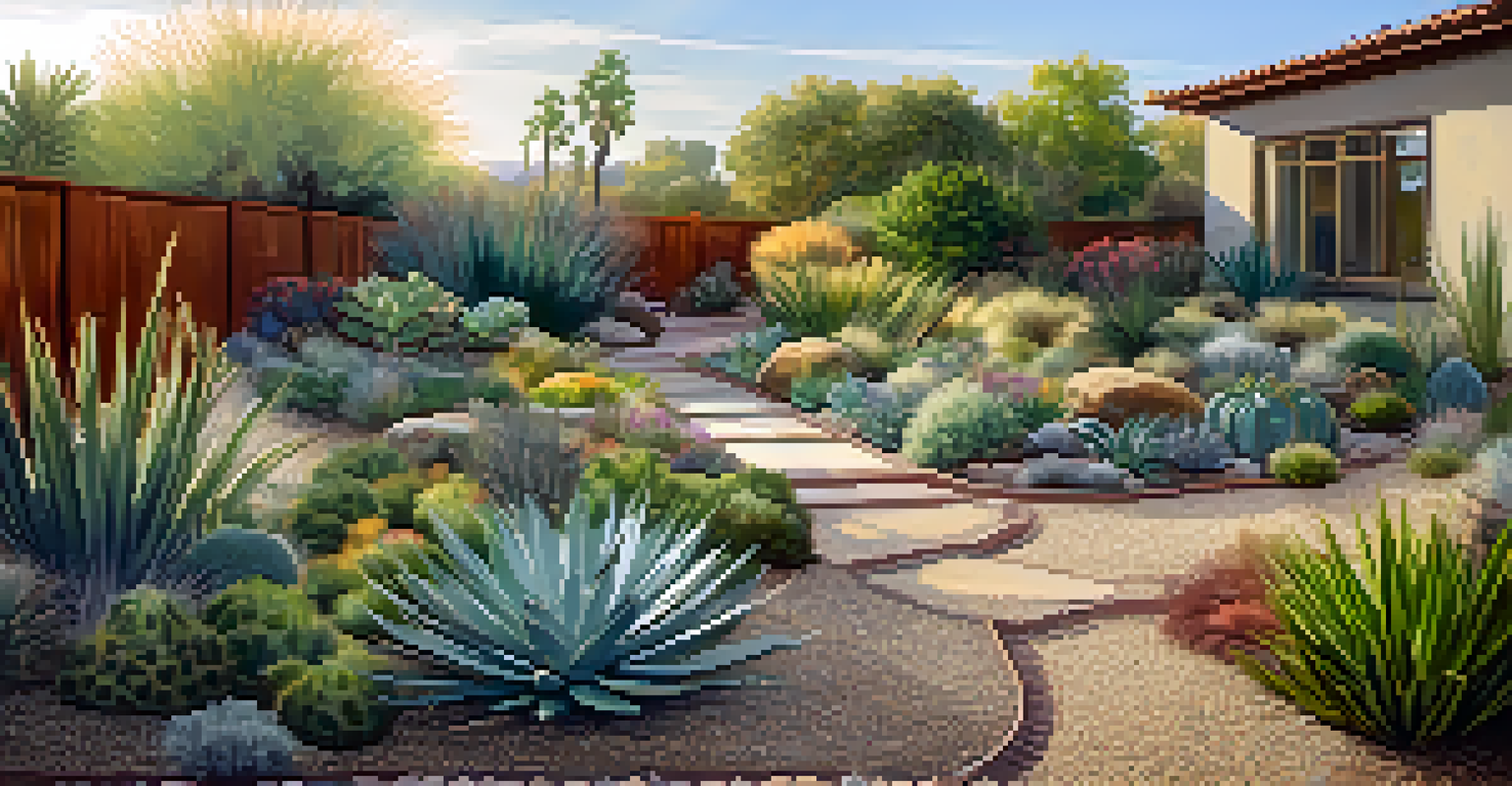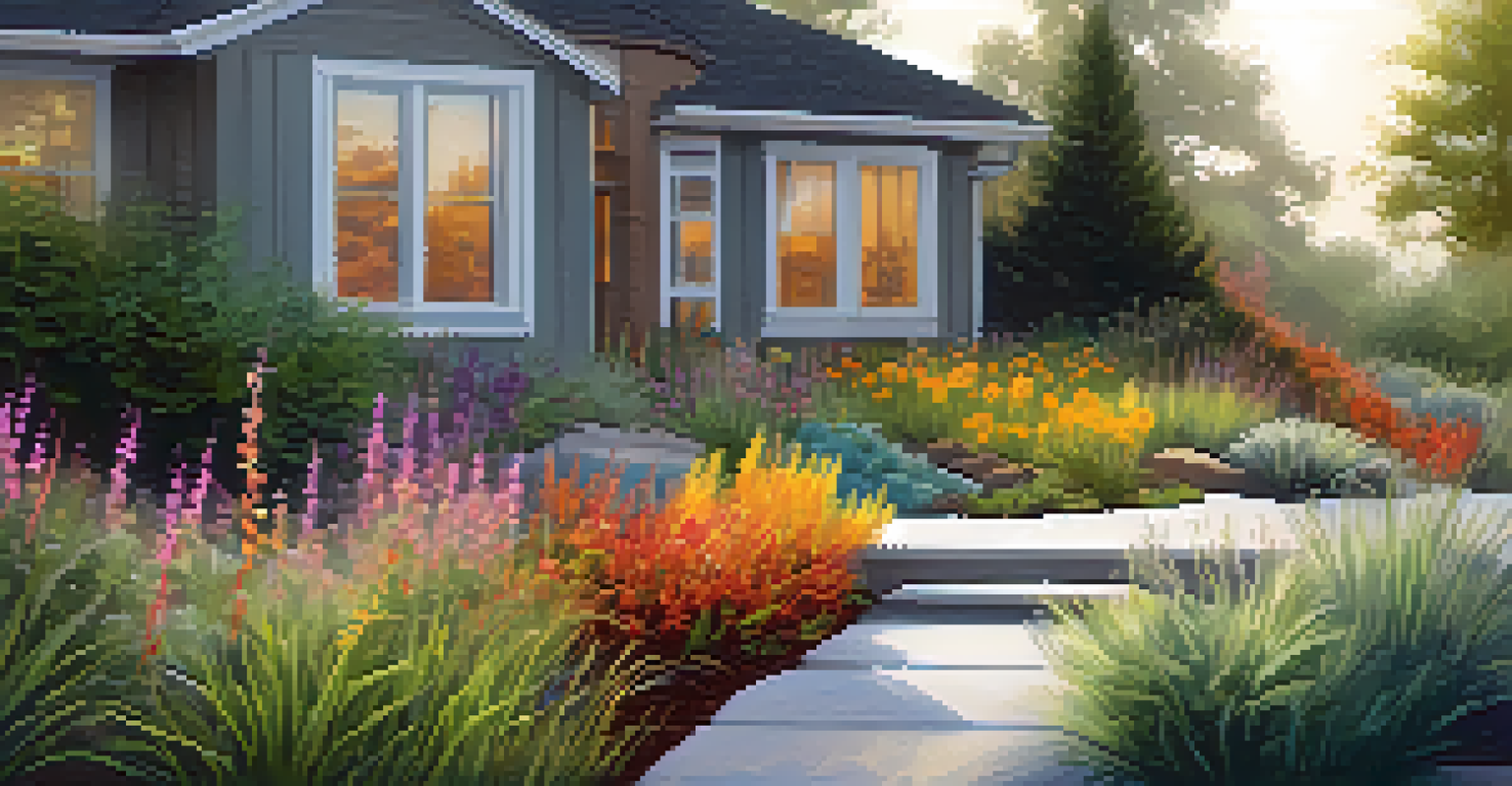Top 10 Sustainable Landscaping Practices for Homeowners

1. Embrace Native Plants for Your Garden
Choosing native plants is a fantastic way to create a sustainable garden. These plants are already adapted to your local climate and soil conditions, which means they require less water and fewer resources to thrive. For example, if you live in the Midwest, incorporating coneflowers and black-eyed Susans can attract pollinators while keeping maintenance low.
The Earth does not belong to us: we belong to the Earth.
Additionally, native plants provide essential habitats for local wildlife, fostering biodiversity in your yard. By selecting species that are naturally found in your area, you’re not only beautifying your space but also playing a crucial role in supporting the ecosystem. This approach can lead to a vibrant garden teeming with life.
Lastly, native plants often resist pests and diseases better than non-native varieties. This resilience means you can reduce or eliminate the use of chemical pesticides, making your garden safer for both your family and the environment.
2. Implement Xeriscaping to Save Water
Xeriscaping is a landscaping technique focused on water conservation, making it a smart choice for homeowners in dry climates. This practice involves designing your garden with drought-resistant plants and efficient irrigation methods. Imagine transforming a traditional lawn into a vibrant oasis filled with succulents and ornamental grasses that require little water.

By grouping plants with similar water needs together, you can create a more efficient watering system. This not only reduces water waste but also minimizes your water bill. For example, using drip irrigation systems can deliver moisture directly to the plant roots, ensuring they get exactly what they need.
Choose Native Plants for Sustainability
Incorporating native plants in your garden minimizes resource use while supporting local wildlife and biodiversity.
Moreover, xeriscaping can enhance the aesthetic appeal of your home. With a variety of textures and colors found in drought-tolerant plants, your yard can look stunning while being environmentally friendly. This approach allows you to enjoy a beautiful landscape without the guilt of excessive water use.
3. Use Organic Mulch for Moisture Retention
Organic mulch, such as wood chips or straw, serves as a great ally in sustainable landscaping. Applying mulch around your plants helps retain soil moisture, reducing the need for frequent watering. This is particularly beneficial during hot summer months when evaporation rates are higher.
The greatest threat to our planet is the belief that someone else will save it.
Additionally, mulch acts as a natural weed barrier, which means less time spent pulling weeds and less need for chemical herbicides. It can also improve soil health over time as it decomposes, adding nutrients back into the ground. Think of it as a cozy blanket for your plants that keeps them comfortable and nourished.
Finally, using organic mulch helps regulate soil temperature, protecting plant roots from extreme heat or cold. This stability promotes healthier plants and can lead to a more successful garden overall. By incorporating this simple practice, you are taking a step towards a more sustainable landscape.
4. Create a Rain Garden for Stormwater Management
A rain garden is a beautiful and functional addition that helps manage stormwater runoff. By designing a garden that collects and absorbs rainwater, you can reduce flooding and erosion in your area. This not only protects your property but also helps recharge groundwater supplies, making it a win-win for the environment.
These gardens typically feature native plants that thrive in wet conditions, making them both practical and visually appealing. Imagine a colorful patch of flowers and grasses that not only look good but also serve a purpose in managing excess water. It’s like giving Mother Nature a helping hand while enhancing your yard’s beauty.
Implement Xeriscaping for Water Savings
Xeriscaping, with drought-resistant plants and efficient watering systems, conserves water and enhances your garden's beauty.
Moreover, rain gardens can attract beneficial wildlife, like birds and butterflies, creating a lively and dynamic space. By integrating this sustainable practice, you contribute to a healthier ecosystem while enjoying a unique feature in your landscape. It’s a small change that can have a significant environmental impact.
5. Install a Compost Bin for Nutrient-Rich Soil
Composting is a fantastic way to recycle kitchen scraps and yard waste into nutrient-rich soil. By setting up a compost bin in your backyard, you can turn organic waste into valuable food for your garden. This not only reduces landfill waste but also minimizes the need for chemical fertilizers, which can harm the environment.
Your compost bin can handle a variety of materials, from vegetable peels to grass clippings. As these materials break down, they create a rich compost that can be mixed into your garden beds, enhancing soil structure and fertility. It’s like giving your plants a gourmet meal made from your own kitchen leftovers!
Additionally, composting fosters a sense of connection to your garden. Watching the transformation of waste into something beneficial can be incredibly rewarding. It’s a simple yet effective way to practice sustainability right at home, demonstrating that your small efforts can contribute to a larger environmental movement.
6. Opt for Permeable Paving Solutions
When it comes to hardscaping, choosing permeable paving materials can make a significant difference in sustainability. Permeable pavers allow rainwater to seep through, reducing runoff and helping to recharge groundwater. For instance, using gravel or permeable concrete in driveways and walkways can prevent puddles from forming and promote better drainage.
This practice not only helps with stormwater management but also reduces the risk of flooding in your landscape. By allowing water to infiltrate the ground, you’re minimizing erosion and protecting local waterways from pollution caused by runoff. It’s like creating a sponge that helps absorb the rain instead of letting it wash away.
Reduce Lawn Size for Eco Benefits
Cutting down lawn space allows for diverse plant life, reduces maintenance, and promotes a more sustainable landscape.
Moreover, permeable paving can add aesthetic appeal to your property. With various designs and materials available, you can create beautiful, functional surfaces that enhance your outdoor space. This choice combines practicality with style, showing that sustainable landscaping can be both eco-friendly and attractive.
7. Reduce Lawn Size for Environmental Benefits
One of the most effective ways to create a sustainable landscape is to reduce the size of your lawn. Traditional lawns often require extensive watering, mowing, and fertilizing, which can be taxing on the environment. By cutting down on lawn space, you can free up resources and create room for more diverse plant life.
Consider replacing sections of your lawn with native plants, flower beds, or vegetable gardens. This not only enhances biodiversity but also creates a more vibrant and interesting landscape. Imagine transforming a monotonous green expanse into a lively tapestry of colors and textures that support local wildlife.

Additionally, a smaller lawn means less maintenance time and lower energy consumption from lawn equipment. You’ll spend less time mowing and more time enjoying your outdoor space. Embracing this shift can lead to a more sustainable lifestyle while beautifying your home.
8. Practice Seasonal Planting for Maximum Efficiency
Seasonal planting involves choosing the right plants for each season, allowing you to maximize growth and resource efficiency. By aligning your planting schedule with the natural cycles of your region, you can ensure that your plants thrive without unnecessary interventions. For instance, planting cool-season crops in early spring can yield a bountiful harvest before the heat of summer arrives.
This practice not only optimizes your garden’s productivity but also enhances soil health. By rotating crops and planting according to seasons, you reduce the risk of pests and diseases that can arise from monoculture, where the same plants are grown repeatedly. It’s like giving your garden a fresh start every season.
Moreover, seasonal planting encourages diversity in your garden, attracting various pollinators and beneficial insects throughout the year. This creates a thriving ecosystem right in your backyard. By embracing this approach, you’re not just growing plants; you’re cultivating a sustainable and resilient landscape.